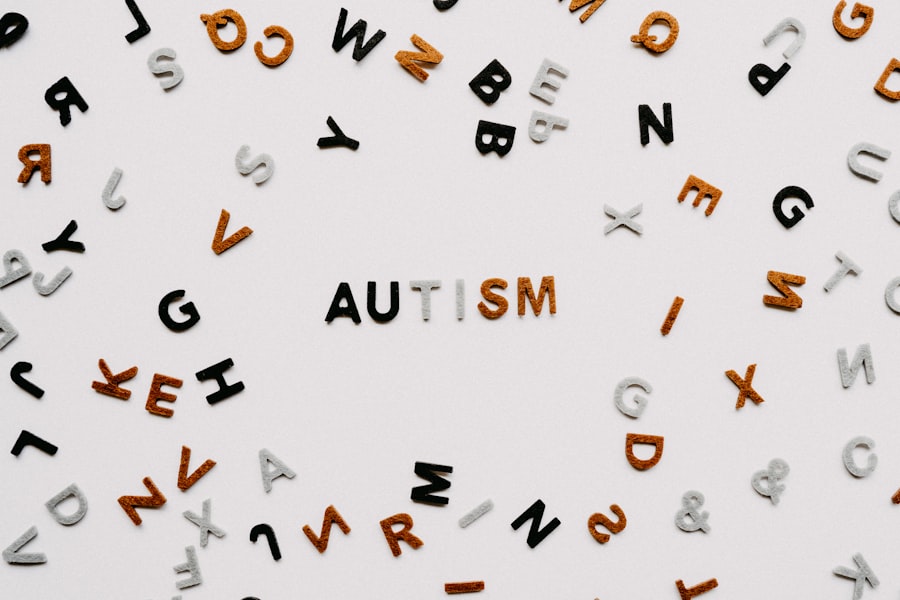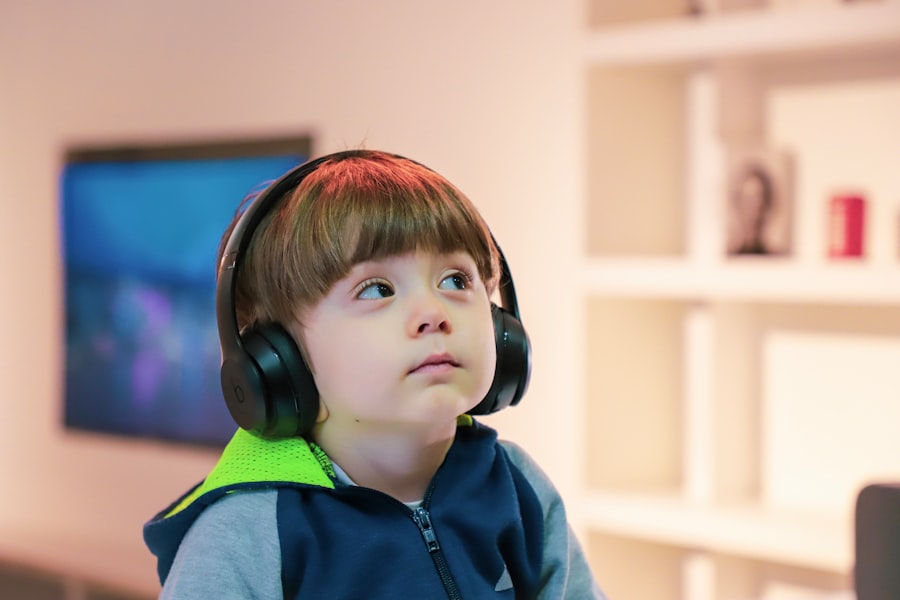Depersonalization and derealization are complex psychological phenomena that can leave individuals feeling detached from themselves or their surroundings. You may find yourself experiencing a sense of unreality, as if you are observing your life from a distance, or feeling disconnected from your own thoughts and emotions. These experiences can be disorienting and distressing, often leading to confusion and anxiety.
Understanding these conditions is crucial, especially for those who may be affected by them, such as individuals on the autism spectrum. As you delve deeper into the world of depersonalization and derealization, it becomes evident that these experiences are not merely fleeting moments of daydreaming or distraction. They can manifest as persistent feelings of detachment that interfere with daily functioning.
For many, these sensations can be triggered by stress, trauma, or overwhelming sensory input. Recognizing the signs and understanding the underlying mechanisms can empower you to seek help and develop coping strategies.
Key Takeaways
- Depersonalization and derealization are experiences where individuals feel disconnected from themselves and their surroundings.
- There is a potential relationship between autism and depersonalization/derealization, with individuals on the autism spectrum being more susceptible to these experiences.
- Symptoms of depersonalization and derealization include feeling like an outside observer of one’s thoughts and actions, and experiencing a sense of unreality in the environment.
- Triggers for depersonalization and derealization in individuals with autism can include sensory overload, social stress, and changes in routine.
- Depersonalization and derealization can have a significant impact on individuals with autism, affecting their daily functioning and quality of life.
The Relationship Between Autism and Depersonalization/Derealization
The intersection of autism and depersonalization/derealization is an area of growing interest among researchers and mental health professionals. If you are on the autism spectrum, you may find that your unique neurological makeup influences how you experience these dissociative symptoms. Individuals with autism often have heightened sensitivity to sensory stimuli, which can lead to overwhelming feelings of anxiety or stress.
In such cases, depersonalization and derealization may serve as coping mechanisms, allowing you to escape from an overstimulating environment. Moreover, the social challenges associated with autism can exacerbate feelings of isolation and disconnection. You might struggle to relate to others or feel misunderstood in social situations, which can contribute to a sense of unreality.
This relationship between autism and dissociative experiences highlights the importance of understanding how these symptoms manifest in individuals with autism, as well as the need for tailored support and interventions.
Symptoms of Depersonalization and Derealization

The symptoms of depersonalization and derealization can vary widely from person to person. You may experience a range of sensations, including feeling as though you are outside your body or observing yourself from a distance. This can create a sense of unreality that is both unsettling and confusing.
In some cases, you might find it difficult to connect with your emotions or feel as though your thoughts are not your own. Derealization, on the other hand, involves a distorted perception of the external world. You may perceive your surroundings as foggy, dreamlike, or lacking in significance.
Familiar places may seem strange or unfamiliar, leading to feelings of disorientation. These symptoms can be particularly distressing for individuals with autism, as they may already struggle with sensory processing and social interactions. Recognizing these symptoms is the first step toward understanding their impact on your daily life.
Triggers for Depersonalization and Derealization in Individuals with Autism
| Trigger | Percentage of Individuals Affected |
|---|---|
| Sensory Overload | 75% |
| Social Stress | 60% |
| Change in Routine | 50% |
| Emotional Distress | 45% |
| Physical Fatigue | 40% |
Identifying triggers for depersonalization and derealization is essential for managing these experiences effectively. For individuals with autism, sensory overload is a common trigger. You might find that loud noises, bright lights, or crowded spaces can lead to feelings of detachment as your brain attempts to cope with overwhelming stimuli.
In such situations, your mind may resort to dissociation as a protective mechanism. Additionally, emotional stressors can also trigger these symptoms. If you are faced with social situations that induce anxiety or if you experience significant changes in your routine, you may find yourself slipping into a state of depersonalization or derealization.
Understanding these triggers can help you develop strategies to minimize their impact and create a more supportive environment for yourself.
Impact of Depersonalization and Derealization on Individuals with Autism
The impact of depersonalization and derealization on individuals with autism can be profound. You may find that these experiences interfere with your ability to engage in daily activities, maintain relationships, or pursue personal goals. The sense of disconnection can lead to increased feelings of isolation and loneliness, further exacerbating the challenges associated with autism.
Moreover, the emotional toll of these experiences cannot be underestimated. You might grapple with feelings of anxiety, depression, or frustration as you navigate a world that often feels alien or unwelcoming. This emotional burden can hinder your overall well-being and quality of life.
Recognizing the impact of depersonalization and derealization is crucial for developing effective coping strategies and seeking appropriate support.
Coping Mechanisms for Depersonalization and Derealization in Autism

Developing coping mechanisms for managing depersonalization and derealization is essential for individuals with autism. One effective strategy is grounding techniques, which help anchor you in the present moment. You might find it helpful to focus on your breath, engage in mindfulness exercises, or use sensory objects to reconnect with your surroundings.
These practices can provide a sense of stability when feelings of detachment arise. Another useful approach is establishing a structured routine that minimizes sensory overload and emotional stressors. By creating a predictable environment, you can reduce anxiety and create a sense of safety.
Additionally, engaging in activities that bring you joy or relaxation—such as art, music, or nature walks—can serve as powerful tools for grounding yourself during episodes of depersonalization or derealization.
Treatment Options for Depersonalization and Derealization in Autism
When it comes to treatment options for depersonalization and derealization in individuals with autism, a multifaceted approach is often most effective. Therapy can play a crucial role in helping you understand and manage these experiences. Cognitive-behavioral therapy (CBT) is one common approach that focuses on identifying negative thought patterns and developing healthier coping strategies.
Medication may also be considered in some cases, particularly if symptoms are severe or persistent. Antidepressants or anti-anxiety medications may help alleviate some of the emotional distress associated with depersonalization and derealization. However, it’s essential to work closely with a healthcare professional to determine the best course of action tailored to your unique needs.
The Importance of Seeking Support for Depersonalization and Derealization in Autism
Seeking support for depersonalization and derealization is vital for individuals with autism who experience these symptoms. You don’t have to navigate this journey alone; reaching out to mental health professionals who understand the complexities of autism can provide valuable insights and guidance. Support groups or online communities can also offer a sense of belonging and understanding from others who share similar experiences.
Additionally, involving family members or caregivers in the process can enhance your support network. Educating them about depersonalization and derealization can foster empathy and understanding, allowing them to provide more effective support when you need it most.
Strategies for Parents and Caregivers to Support Individuals with Autism and Depersonalization/Derealization
If you are a parent or caregiver of an individual with autism who experiences depersonalization or derealization, there are several strategies you can employ to provide support. First and foremost, fostering open communication is essential. Encourage them to express their feelings and experiences without judgment, creating a safe space for dialogue.
Additionally, being attuned to their sensory needs can make a significant difference.
The Role of Therapy in Managing Depersonalization and Derealization in Autism
Therapy plays a pivotal role in managing depersonalization and derealization for individuals with autism. A skilled therapist can help you explore the underlying causes of these experiences while equipping you with practical tools for coping. Through therapeutic techniques such as mindfulness training or exposure therapy, you can learn to navigate challenging situations more effectively.
Moreover, therapy provides an opportunity for self-exploration and personal growth. As you work through your experiences with a professional, you may gain valuable insights into your emotions and thought patterns—empowering you to reclaim agency over your life.
Conclusion and Future Considerations for Understanding and Addressing Depersonalization and Derealization in Autism
In conclusion, understanding depersonalization and derealization within the context of autism is crucial for fostering awareness and support for those affected by these experiences. As research continues to evolve, it is essential to prioritize individualized approaches that consider the unique needs of each person on the spectrum. By recognizing the relationship between autism and dissociative symptoms, we can work toward creating more inclusive environments that promote understanding and acceptance.
Whether through therapy, support networks, or educational initiatives, there is hope for individuals navigating the complexities of depersonalization and derealization in their lives. Your journey toward understanding these experiences is an important step toward fostering resilience and well-being in the face of challenges.
An insightful article on this topic can be found on Unplugged Psych, which delves into the intricacies of how these dissociative experiences manifest in individuals with autism. The article provides a comprehensive overview of the symptoms, potential causes, and therapeutic approaches to managing these conditions. For a deeper understanding, you can read more about it here.
LEARN MORE About Unmasking the Mysteries Behind Depersonalization and Derealization
FAQs
What is depersonalization and derealization in autism?
Depersonalization and derealization are experiences where individuals feel detached from themselves (depersonalization) or feel that the world around them is unreal or distorted (derealization). In autism, these experiences may be more common due to differences in sensory processing and social interaction.
What are the symptoms of depersonalization and derealization in autism?
Symptoms of depersonalization and derealization in autism may include feeling disconnected from one’s body or emotions, feeling like an outside observer of one’s thoughts or actions, and experiencing the world as surreal or dreamlike. These symptoms can be distressing and impact daily functioning.
What causes depersonalization and derealization in autism?
The exact cause of depersonalization and derealization in autism is not fully understood, but it is believed to be related to differences in sensory processing, social interaction challenges, and heightened anxiety or stress. These experiences may also be linked to difficulties in self-awareness and emotional regulation.
How are depersonalization and derealization in autism diagnosed?
Depersonalization and derealization in autism are typically diagnosed through a comprehensive evaluation by a healthcare professional, such as a psychologist or psychiatrist. The evaluation may include a thorough assessment of the individual’s symptoms, medical history, and any co-occurring conditions.
What are the treatment options for depersonalization and derealization in autism?
Treatment for depersonalization and derealization in autism may include therapy, such as cognitive-behavioral therapy (CBT) or sensory integration therapy, to help individuals understand and cope with their experiences. Additionally, addressing any underlying anxiety or stress through medication or relaxation techniques may be beneficial.
How can individuals with autism and depersonalization/derealization be supported?
Individuals with autism and depersonalization/derealization can be supported through understanding and validation of their experiences, providing a safe and predictable environment, and offering sensory accommodations. It is important to work with healthcare professionals to develop a personalized support plan based on the individual’s specific needs.




